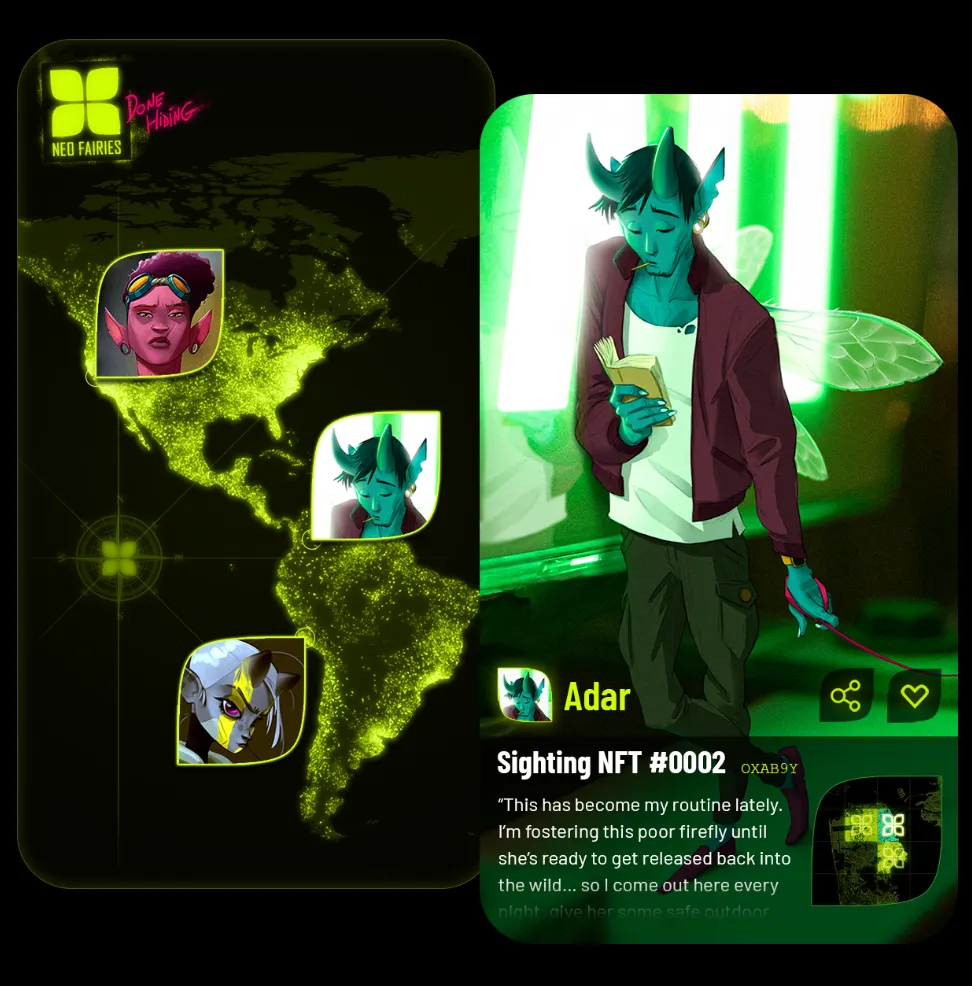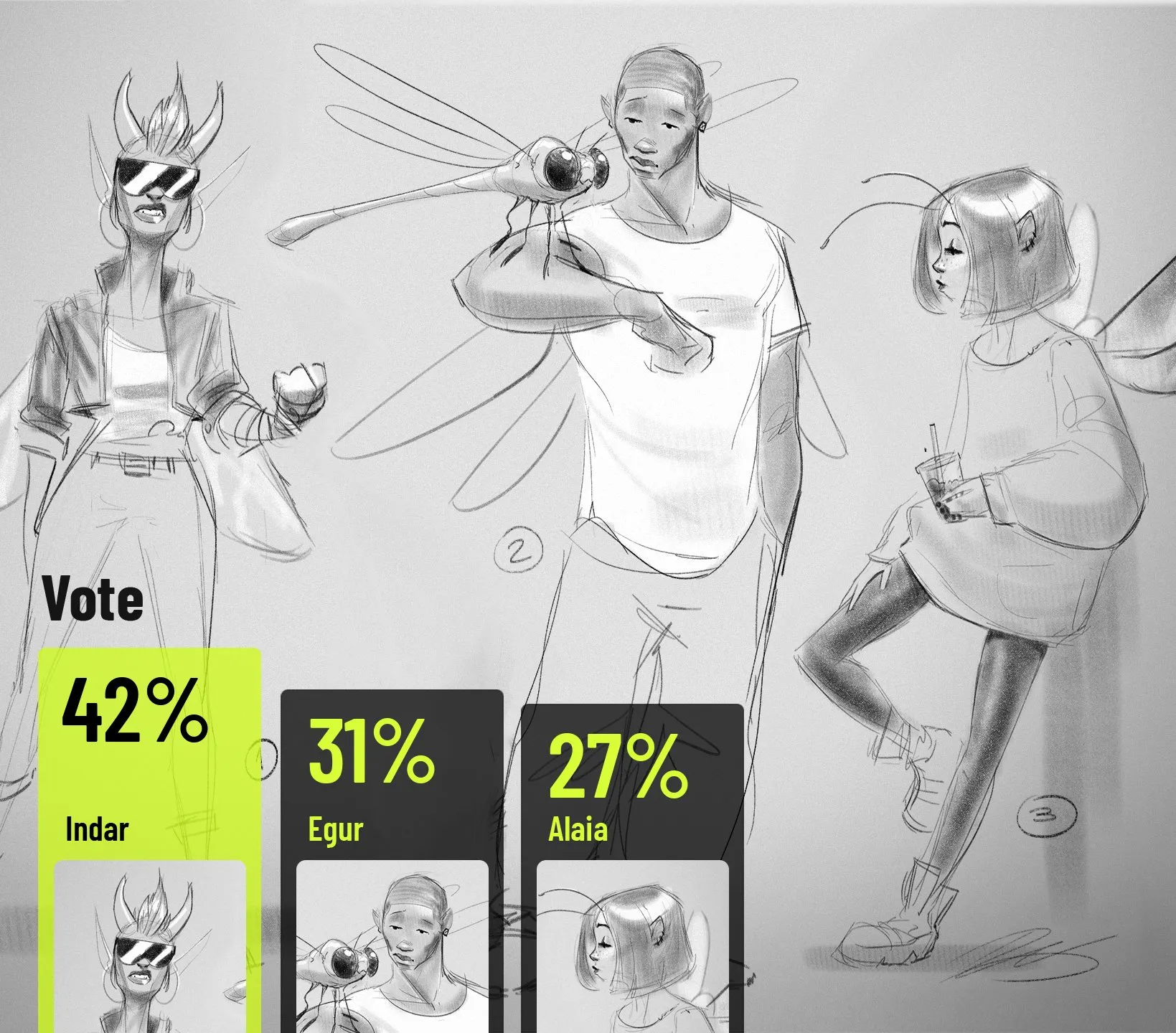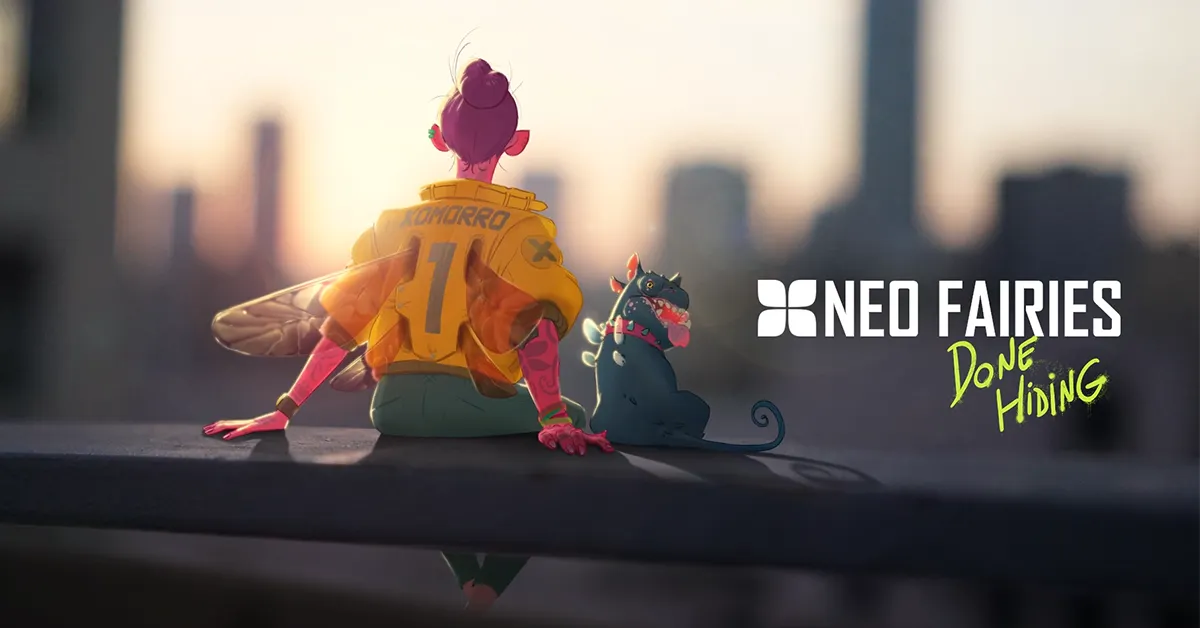In brief
- Luda is a Web3 startup co-founded by former PlayStation and Google AI leads.
- The firm plans to launch franchises that can be owned and shaped by Solana DAO communities, starting with Neo Fairies.
For nearly two decades in total, Shannon Studstill was part of the PlayStation juggernaut as a co-founder of Sony’s Santa Monica Studio. She was lead producer on 2005’s smash “God of War” and worked on numerous other titles, and later served as executive producer on 2018’s acclaimed “God of War” reboot.
But after all that time overseeing ever-larger development teams working on increasingly massive AAA video games—plus a brief stint on Google’s Stadia team—she now aims to work with thousands or potentially millions of people to develop new entertainment franchises via decentralized autonomous organizations (DAOs) on Solana.
“What if we turn [IP creation] on its head a little bit and allow the community to own that and build on it,” Studstill told Decrypt, “and find the path that they would like to take, with some support by visionaries and so forth?”
Studstill is the co-founder of Web3 startup Luda, which she established last summer with fellow co-founder and CEO Vijay Sundaram, who she met at Google. Sundaram began the Interactive Entertainment R&D group at Google AI, and was exploring ways for machine learning and other emerging tech to impact gameplay experiences.
1/ “I used to warehouse-race when I was younger, with a piece of junk Avispa SC50 that I somehow patched together. This one time in Pasadena, one of the ailerons broke right off during a hard bend and I went flying into a pile of metal shards. Believe me, it wasn’t pretty. pic.twitter.com/debjucNgWm
— Neo Fairies (@neofairies) April 19, 2022
After Studstill joined the Google Stadia team in 2020 as director of its Playa Vista Studio, the two aligned on the possibilities around user-generated content (UGC)—but they wanted to shift away from creation games that are built on the backs of players that create value. Roblox, for example, takes a 71% cut of content sold by users and external developers.
“As DAOs and NFTs started to blow up, we were like: ‘Wait, how messed up is it that these people make all these things—they build in Minecraft and Roblox—and yet they have no ownership of the thing they made?’” said Sundaram. “We can right so much of what now feels wrong when you see what can happen with these technologies.”
“Done hiding”
Neo Fairies is the first project to come out of Luda’s DAO-based collaborative creation initiative, but it’s not being built from the outset as a video game. It could potentially become that—or a TV show, or books, etc. It’s being created as a franchise first, with Luda planning to let the eventual community of creators ultimately shape its path forward via the DAO.
Luda’s goal from the outset is to feed nuggets of lore and the world to budding creators and then allow them to develop their own characters. Neo Fairies focuses on a scenario in which fairies have always been around, but they were previously driven into hiding by humans.
— Neo Fairies (@neofairies) May 17, 2022
It’s a new era for fairies, however, and they’re emerging back into the world. As a collaborative world-building experience, Neo Fairies will allow players to create and define the story of their very own fairy and a place in the “fantasy-punk” world.
“It's our turn to right the wrong, welcome them here, and tell their stories,” Sundaram explained. “That's the fantasy. What we want it to become, to begin with, is a story world that we build together with the community—but we’ll give the community lots of tools to do that.”
Users will be able to choose a spot on a real-world map and mint that as a Solana NFT, as well as create a unique fairy and mint an NFT to prove provenance and ownership. Minting will be free, aside from transaction fees (which are typically a fraction of a penny on Solana), and the goal is to give participants something that they can claim as their own.
Luda will open up the Neo Fairies DAO community later this month and let people claim a place on the world map, ahead of launching the fairy creation platform later this year. Neo Fairies imagery shows a fairy-themed social app of sorts—like a role-playing Facebook in which people can shape their characters within a community.

Luda is building for the masses, too, with no limit on how many fairies can be created and minted as NFTs. That’s a key reason why the startup chose Solana, Sundaram said, due to the low fees and higher throughput compared to a platform like Ethereum. Scarcity isn’t the goal.
“We've been thinking about UGC projects where there's millions of people—not 10,000 people,” Sundaram explained. “People go to Minecraft and pay to make a structure, or they make a thing not because they want to flip it for money. They make it because they are genuinely creatively inspired.”
"We've been thinking about UGC projects where there's millions of people—not 10,000 people."
Neo Fairies hopes to light that same spark in users, but initially for building out stories that can eventually be transported across media platforms. But as Sundaram alluded to, the goal isn’t to yield super-valuable NFTs to flip—a notion that pushes back against the speculative frenzy that has dominated so much of the conversation around NFTs.
Reframing NFTs
Neo Fairies is built on Web3 technology, but Sundaram said that NFTs are just a way for “people to understand what they own.” An NFT is a blockchain token that conveys ownership in an item, and in this case, the Solana NFT will tie each fictional fairy to the creator’s wallet.
High-value Ethereum NFTs like the Bored Ape Yacht Club and CryptoPunks—which have sold for as much as millions of dollars apiece—are not representative of Luda’s aims.
“It’s the exact inverse of everything you want for UGC, right? The high price, they're scarce or limited, and you can't move them around,” said Sundaram of pricey NFT projects. He said that Luda’s team is now “even more bullish” about how NFTs can be reframed around “user-owned content,” which is how they’re describing Neo Fairies’ tokens.
But that may be a challenging message to convey. In the traditional gaming space, Studstill’s old stomping grounds, many gamers vocally push back against NFTs as cash grabs—another perceived way for money-grubbing publishers to extract value from players. And the crypto world’s scams and wildly fluctuating markets don’t help with the perception.
“I think it’s going to take showing them what they don’t know,” Studstill said of core gamers. She described NFT ownership of in-game items as “a real game-changer,” but many gamers are deeply passionate about their hobby. They can also be defensive about shifts in business models, too—as seen in the past with free-to-play games and downloadable content (DLC).
“They're deep in tech. They get it, and they understand what's going on,” she added. “They're going to want to make sure that it's the right move for them.”
The DAO decides
Like some other recently revealed Web3 IP creation projects—like Terrible Pets, an NFT project from producers behind HBO’s “Silicon Valley”—what Neo Fairies ultimately turns into isn’t fully firmed up just yet. But Luda has a plan for how the project can transform from initial seeds to a potentially bountiful entertainment franchise that grows over time.
As mentioned, it’ll revolve around a DAO. A DAO is a way for people to collaborate and connect around a shared cause or purpose, and membership and governance rights are often conveyed through a crypto token. In this case, minting a free Neo Fairies NFT will gain creators access to the DAO community to participate in story and franchise development.
Sundaram said that Luda is actively developing a legal framework to assign the Neo Fairies IP rights to the DAO and enable the community to collectively govern the development of the franchise. That’s an ongoing process, he said, and one they’re approaching carefully. Future value in the franchise will build in the DAO, which can determine how to distribute it.
Your free, created fairy NFT—potentially one of millions, if Neo Fairies catches on—most likely won’t see any massive rise in value, Sundaram admitted. But if your created character becomes a significant part of the community-developed lore and is tapped for future films, games, and other media, then perhaps the NFT will become desirable.
That’s more a remote possibility than any kind of promise that Luda can, or even wants to make. As Sundaram described, the focus here is on “create-to-own”—participants can create a fairy, own the rights to that creation, use it in future Neo Fairies platforms, and help shape potential other use cases. It’s a proof of ownership and provenance, and an access pass.

Luda envisions this framework being used by all manner of creative Web3 projects. Neo Fairies is the first IP powered by the decentralized, Solana-based Wonder protocol, which Luda is contributing to and which is designed to enable community creation of an entertainment franchise through mass NFT minting, DAO governance, and other tools.
Sundaram believes that the next Marvel-like franchise or Roblox-esque sensation could be developed by a community rather than a company, with potential benefits flowing back to the contributors that bring it to life. Neo Fairies is Luda’s first attempt at facilitating that process.
“Let's get people creatively interested. Let's not ask a lot of them, but we'll give them tools. We'll make it playful,” he affirmed. “But if we're successful as a community creating something really special here, then there will be upside in that for everybody.”

